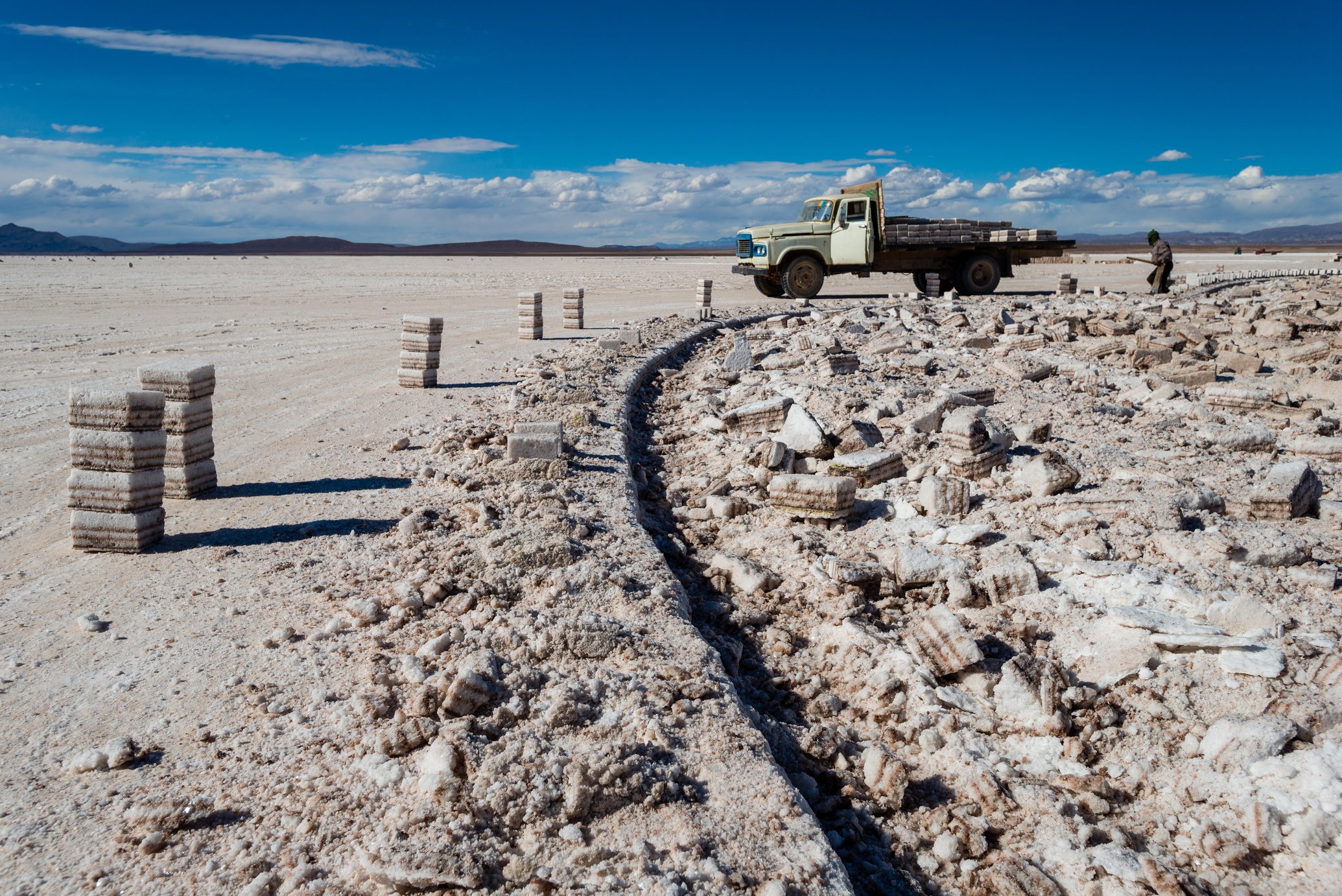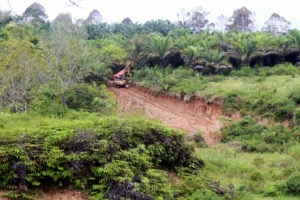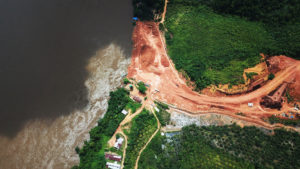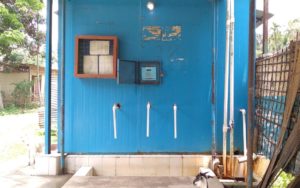The EU needs to decarbonise its transport sector, which produces about a quarter of its CO2 emissions, to meet its target of climate neutrality by 2050. To do this it wants to put 30 million electric vehicles on its roads by 2030. But that requires a lot of lithium, a key component in electric vehicle batteries.
China and the EU after the pandemic
Read more from this series, in which we compare the post-Covid policies of China and the European Union, and how their relationship is evolving
In a strategy plan on critical raw materials published last September, the European Commission (the EU’s executive arm) forecast that Europe would already need 18 times as much lithium in 2030 compared to current EU supply in order to meet its demand for electric vehicle batteries.
But the EU is not a lithium producer. It relies on imports (78% comes from Chile, 8% from the US and 4% from Russia) so a big question for Europe is how it will source the extra needed. While Chile provides 44% of global supply and China is the next largest with 39%, the EU’s answer is to exploit some of the many reserves in its own territory by developing new mines. The result is a plethora of mining projects springing up across Europe.
‘Horrific’ ecological footprint
The plan has angered environmentalists because of what one, who did not want to be named, described as the “horrific” ecological footprint of lithium mining on soil, water and air, as well as increased carbon emissions, which, ironically, is what the EU wants to curb.
The rush for lithium, said environmentalists, is difficult to square with the EU’s desire to be a world leader in climate change and environmental legislation.
“It is not only a dichotomy, I would even go as far as saying it’s an hypocrisy, because right now we’re dealing with an issue of over-consumption that is driving the ecological and climate crisis,” said Diego Francesco Marin, environmental justice specialist at the European Environmental Bureau (EEB), an umbrella group of civil society organisations.
The rush for lithium is difficult to square with the EU’s desire to be a world leader in climate
He pointed to plans in the Jadar valley in Serbia by Rio Tinto to open an underground lithium mine which the company said could produce enough to meet the EU’s needs for decades. But this is a region where the main economic activity is farming, people typically live low-impact lives and are very attached to the land.
“This project is being sold from an environmental perspective as getting us towards the green transition and towards net zero, but at a huge cost,” he said. Rio Tinto declined to comment.
In response, an EU official told China Dialogue that the economic importance and supply risk for lithium – the factors used to determine criticality – have increased “significantly” since the last analysis in 2017. “Given the economic and technological relevance of this resource, as well as the external dependencies it generates, it is our responsibility to ensure that the European economy can benefit from a sustainable and resilient supply of lithium,” said the official.
Lithium, the new critical raw material
Last September’s strategy plan was crucial for miners, as for the first time it put lithium on its list of critical raw materials, which benefit from special treatment in the EU’s industrial strategy. For example, they may be subsidised beyond levels normally allowed under EU state aid law.
This extension of its list was prompted by the huge disruptions to global supply chains as a result of the Covid-19 pandemic. Added to that are rising geopolitical tensions, notably with China, stoking further fears about supply chains.
Johanna Lehne, senior policy officer at sustainability think-tank E3G, said: “There’s a growing sense that there’s a potential here for China in the future to use the fact that other countries are dependent on it for these particular materials, given the current geopolitical context.”
These raw materials also form an important part of the EU’s twin industrial strategy, announced in March, to promote the green transition and the digital transition (for which lithium is also crucial) and create more jobs and growth within Europe.
Higher standards
The mining industry says lithium extraction is cleaner than it once was and that thanks to superior environmental legislation in the EU, producing in Europe would be a more responsible way to secure supply.
“Mining in Europe is to the highest standards and respecting all of the legislation. And we all know that we have a lot of legislation, and we rightly have good legislation, which is steering and balancing the societal ambition from pure exploitation to a society which is in balance and sustainable,” said Rolf Kuby, director of Euromines, an industry association.
Much depends though on the implementation. Sara Matthieu, member of the European Parliament’s Greens, said: “We think that in comparison with most other places in the world, standards in the EU are higher. This doesn’t mean there are no problems with mining operations at all.”

Much also depends on the type of mining. The EuGeLi project in Alsace, led by French mining Group Eramet, would extract lithium from subterranean brines used to produce geothermal energy.
Eramet chief executive Christel Boies said: “The critical issue for lithium mining is the consumption of water in areas that are already overstretched. We have 12 patents on a technology that significantly reduces the impact of the water usage. There are technologies, as with our technology, that are really environmentally friendly.”
According to the European Geothermal Energy Council, such methods of production are also cleaner because extraction is done underground, no fluids or gases are released and, by using the geothermal renewable energy, they are zero-emission.
The council’s policy chief Sanjeev Kumar said this method would mean Europe could “avoid what we see in Chile” where huge land masses are devoted to lithium extraction. He also said the potential is huge, citing the Vulcan Energy Resources plant in Germany’s Rhine Valley which could produce enough lithium for 400 million electric vehicles.
This doesn’t satisfy the critics, however. Marin at the EEB said: “But it still doesn’t answer a larger question. Who are the people on the ground that are going to be severely affected by these projects? Because all mining projects have an ecological footprint.”
Demand in question
Whether or not lithium may be extracted using clean processes, it’s not clear to many analysts that Europe needs to produce any lithium on its own territory or whether it needs to have as much lithium as it has projected.
The demand projections reflect current policies and ambitions. “Based on different technologies, for example, the use of lithium could be severely decreased, or based on [increased] public transportation, or just heavily rethinking how we do our cities,” said Marin at EEB, adding, “If we mine more lithium we lock ourselves into these technologies because there’s no need for an alternative.”
He pointed to a recent OECD report which forecast that total transport CO2 emissions given today’s policies will still increase by 16% by 2050, compared to 2015 levels. “The expected emissions reductions from these policies will be more than offset by increased transport demand,” said the report. More ambitious policies (including shared mobility and better urban planning) in cities, for example, could bring about a decrease of 22% in urban transport activity compared to current projections, and a consequent reduction in CO2 emissions in such areas of as much as 80%.
There are also lithium alternatives for electric vehicles, including vehicles powered by sustainably produced hydrogen. However, analysts said there needs to be more research and development in this area.
“Hydrogen vehicles might compete for a share of the market but given the costs, technological and infrastructural constraints, it is much more likely that the electric vehicle will dominate the mix,” said Maria Pastukhova a policy analyst at E3G.
Cars, whether internal combustion or electric, remain cars. They have a heavy carbon footprint from the whole production process.Maria Pastukhova, E3G
Sodium batteries are an attractive alternative to lithium batteries as the chemical properties are similar. Sodium is much more widely available and its ecological footprint is much lower, though Pastukhova said that so far, the batteries are generally heavier and less powerful. “But in recent years, we’ve seen some development. Still, this technology is not yet mature and needs much more investment in research and development before it can compete with lithium-ion on the market.”
She said that what the EU needs to do is to “take a more holistic approach” to the transport sector. “Cars, whether internal combustion engine drive or electric, remain cars. They take space and have a heavy carbon footprint from the whole production process. Smart city planning, pushing for more cycling, shorter walking distances, remote office etc are just as needed.”
Aside from alternatives for individual vehicles, environmentalists argue there is not enough attention paid in the European Commission’s strategy to recycling of these raw materials, posing a further bind for the EU as it seeks to rid itself of its dependency on oil but looks in danger of replacing it with a dependency on lithium.
Matthieu at the European Parliament said: “We should work on ambitious circular economy policies such as ambitious product design requirements. We also want to drastically increase collection rates of waste products.”
A proposal for a new batteries regulation was published last December, which should prompt more recycling. Rio Tinto, for example, announced in May a deal with battery technology group InoBat to create a “cradle-to-cradle” manufacturing and recycling value chain. This means producing components that can be truly recycled at the end of their life, imitating nature’s cycle where everything can either be reused in some form or returned to the environment without causing damage.
What is clear is that Europeans are very attached to their personal vehicles. A report published in June by the European Environment Agency showed that average emissions for new passenger cars increased in 2019, led by an appetite for sport utility vehicles (SUVs). Proponents say this makes rolling out more electric vehicles more urgent, despite the need for so much lithium.
Henrike Hahn, member of the European Parliament for the Greens, said: “What should be kept in mind is that often the increased input of critical raw materials in green technologies can lead to net beneficial effects for the environment. By using lithium and cobalt in batteries to build electric vehicles… huge volumes of fossil fuels needed to fuel internal combustion engine vehicles are saved.”
For the local residents in the many areas where Europe is pushing for mines, these arguments do not change the fact they will lose land and a way of life established for millennia to ensure the comfort of those in the cities, explained Marin.
“The reason why I call it an hypocrisy is because we say yes, we are going to lead to net zero, but we are recreating these issues that are colonial in a sense where people in the peripheries are meant to provide for the consumption of the core which in this case would be the big European cities.”








